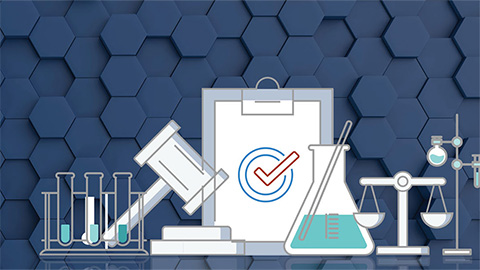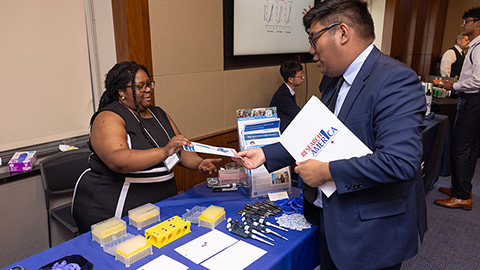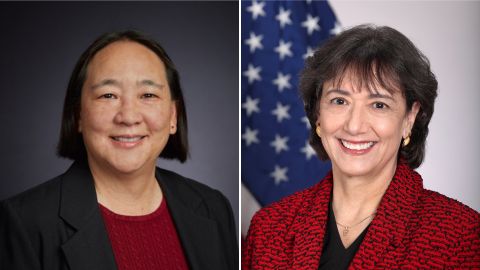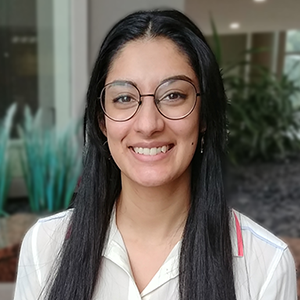Federal agencies struggle to address sexual harassment in STEM research
On the heels of the #MeToo movement in 2017, #MeTooSTEM gained momentum to combat sexual harassment in the fields of science, technology, engineering and math. But how much progress have federal funding agencies made in addressing this pervasive problem?

The U.S. Government Accountability Office reviewed five federal agencies that issued 80% of federal STEM research grants since 2015 to understand each agency’s efforts to prevent sexual harassment and hold perpetrators accountable. The American Society for Biochemistry and Molecular Biology spoke with John Neumann, a managing director for the GAO’s Science, Technology Assessment, and Analytics team, which produced the report. The conversation has been edited.
You can read the full report here.
This report follows a 2015 GAO report on the same subject. What major institutional changes have these five federal agencies made since then?
All five agencies have taken steps to improve their efforts to prevent sexual harassment since the 2015 report. They have established and communicated sexual harassment policies via websites.
Another significant thing they've done is compliance reviews. These were required under Title IX, but when we looked at it in 2015, the Department of Health and Human Services wasn't doing the required reviews. They've since conducted several.
When you look at all five agencies, is there any one that has taken more steps than others?
Yes. Some agencies, specifically the National Science Foundation and NASA, went beyond some of those steps the other agencies have taken. They went ahead and required reporting by universities on sexual harassment complaints. They modified the grant terms and conditions to require this reporting from the universities. I think that was a big additional step.
Do you think that requiring reporting by universities is something other agencies will do?
Certainly. We raised it in our report. We didn't make specific recommendations about a requirement, but we definitely looked at the sexual harassment complaints, which, as you may have noted from the report, are few in number except from the NSF, which had a larger number because they were requiring reporting. In addition, some agencies were going beyond that and tracking concerns about sexual harassment — not just formal complaints filed under Title IX.
The report says agencies need to establish an overall plan to assess their sexual harassment prevention efforts.
All five agencies we reviewed are planning to take steps to establish an overall plan — now that we've pointed out the benefits. Some agencies were informally looking at their efforts, but they weren't really evaluating how successful they were. They didn't have the goals, and they didn't have a plan for how to measure those goals. Now that they understand some of the benefits, each of the agencies we reviewed is taking steps to prepare an overall plan with goals and measures.
What barriers prevent federal agencies from having an overall plan?
There aren't necessarily any barriers. I think that agencies just weren’t working together, particularly internally. Different units were operating separately.
For example, at HHS, NIH and the Office for Civil Rights were not sharing information with each other about complaints and concerns. (Author’s note: The National Institutes of Health is a component of HHS.) If HHS had an overall plan that would encourage the different components to share that information and make it more transparent, I think that's an important step that needs to be taken. And that's why we recommended that agencies have a plan, because that'll help improve efforts and transparency.
I think the largest potential barriers may be just resources; agencies might perceive that it's time consuming. But in the long run, it helps them evaluate how successful their efforts are.
Sexual harassment reports are not always accurate, which has made researching and understanding these issues difficult. Your team determined that the reported data were “sufficiently reliable for the purposes of our reporting objectives.” Do you think the information the GAO captured offers a holistic image of sexual harassment in STEM at grant-receiving institutions?
In short, no, since there's no centralized tracking and reporting of sexual harassment complaints.
Many agencies are not tracking the informal concerns raised when people do not want to make a formal complaint. There's definitely hesitancy sometimes to file a formal complaint because of fears of reprisal or just harming a person's career by calling out problems with the principal investigator or another person who might be important to their career development.
Also, some folks at universities who have these concerns are not sure how to go about reporting them. That's why it's so important that agencies evaluate their websites to make it clear: Here's how you raise concerns; here's where you can raise concerns. I think that's what needs to be done in order to get a better picture of the situation down at the university level.
Explain why it's necessary to collect concerns and not just complaints.
We made recommendations to have procedures to report on those informal concerns. Then the agency can take actions to address the situation more generally as opposed to filing a legal complaint, which can be very difficult for a person as it requires going through the whole incident again. Some people are hesitant to do that. That's why having a mechanism for reporting concerns would help universities and the federal agencies overseeing their sexual harassment prevention efforts to better monitor how well the prevention efforts are working.
None of the five agencies evaluates its communication mechanisms for its sexual harassment prevention policies and procedures. What are the agencies planning to do, if anything, to change this?
All five agencies acknowledged the importance of evaluating their communication mechanisms and laid out some plans to do so. For example, the NSF plans to review its website for grantees to ensure that it's easily navigable. And then the Department of Energy, HHS and the Department of Agriculture are in the process of updating or plan to update their websites to make the information clear.
All the agencies indicated they'll be developing overall plans that will include a regular review of their websites to make improvements as they measure the success of their efforts. For example, is a website easily accessible to the grantees or is it reaching a targeted audience?
What are agencies doing to be more transparent to the public?
It's mainly through their websites. That's where they communicate to the public. But in addition, they're going to the universities and are working with the universities on how to develop training and how to get the word out to people who may be experiencing sexual harassment at the grantee level.
How are federal agencies held accountable when they fail to meet their Title IX responsibilities?
Agencies are definitely responsive to the feedback they received from our review and prior reviews. For example, as I mentioned earlier, we found in 2015 that HHS wasn't conducting required compliance reviews. It was an oversight on their part, and they immediately began doing it and continue to do it.
Sometimes some of these efforts take a back seat to other things. Now that this has been brought more to their attention, they're taking it more seriously and really monitoring their efforts and stepping up their game. Sometimes having an outside entity come in, like the GAO, helps them think through what could they be doing better.
Also, we brought to light what other agencies are doing, which helped them think about things they could do. That's why we noted the benefits of publicizing promising practices and getting the word out about what things can help to prevent sexual harassment.
Are there efforts to harmonize agency policies?
There was one recent effort that we noted in our report. The White House Office of Science and Technology Policy has a subcommittee on safe and inclusive research environments. Agencies noted that this new forum may allow them to establish uniform sexual harassment prevention policies. We did reach out to OSTP to get more information on that. They're still in the process of developing a report, so we were not able to get more information about what the results are. That's something that agencies noted would be an opportunity to harmonize their efforts.
That goes along with broader efforts to harmonize federal research requirements generally, which OSTP is involved in — trying to ensure that agencies aren’t being overly onerous or missing important requirements. That’s an ongoing effort that’s much broader, but this subcommittee specifically is looking at sexual harassment prevention policies.
The GAO report says that, while these five agencies have collaborated through the Department of Justice, there needs to be better and more collaboration. What do you think prevents that?
That was something that the Department of Justice working group noted. There was concern about resources and collaborating on sexual harassment. Every agency was operating independently, and then they would get together to share common challenges.
But we pointed out to them that they could leverage each other's resources.
For example, some are now planning to conduct joint compliance reviews: Instead of each separately going to the same institution, they could say, "Well, you cover (one) institution and then share the findings." That's a way to actually save resources, rather than take resources. So, I think, based on our discussions with them, they plan to take extra efforts to collaborate and share more information.
Your report refers to the NIH working group's 2019 report and the National Academies' 2018 report on sexual harassment. What are the major differences and similarities in the GAO's recommendations?
Both our report and the National Academies and NIH working group reports talk about specific things agencies can do to improve sexual harassment prevention policies.
The obvious differences is that the NIH working group is focused on their own institution. The National Academies was looking more broadly at sexual harassment climate at academic institutions.
We focused specifically on what agencies' responsibilities are to monitor and prevent sexual harassment. It put us in a position to be able to focus on things agencies can specifically do. We purposely looked to complement those other studies and not repeat some of the things that they were looking at.
There were some areas of common ground, in particular efforts to improve communication. That was something the National Academies pointed out as well. So, in a way, we took our cues from that report to see what things we should really drill down on to see how the agencies can improve.
In total, all three reports have recommendations and have found reasons to make recommendations, to improve the specific policies and procedures and even just to address the broader culture and climate of sexual harassment in STEM research.
Any other last comments or thoughts you’d like to share?
We allude to this in our report, but sexual harassment prevention efforts need to go beyond compliance. That’s the floor. Complying with Title IX complaint procedures, that’s the bare minimum of what an agency should be doing. Our report goes beyond that and looks at best practices and recommends agencies take steps to improve their programs and monitor and evaluate them.
Enjoy reading ASBMB Today?
Become a member to receive the print edition four times a year and the digital edition monthly.
Learn moreGet the latest from ASBMB Today
Enter your email address, and we’ll send you a weekly email with recent articles, interviews and more.
Latest in Policy
Policy highlights or most popular articles

ASBMB honors Lawrence Tabak with public service award
He will deliver prerecorded remarks at the 2025 ASBMB Annual Meeting in Chicago.

Summer internships in an unpredictable funding environment
With the National Institutes of Health and other institutions canceling summer programs, many students are left scrambling for alternatives. If your program has been canceled or delayed, consider applying for other opportunities or taking a course.

Black excellence in biotech: Shaping the future of an industry
This Black History Month, we highlight the impact of DEI initiatives, trailblazing scientists and industry leaders working to create a more inclusive and scientific community. Discover how you can be part of the movement.

ASBMB releases statement on sustaining U.S. scientific leadership
The society encourages the executive and legislative branches of the U.S. government to continue their support of the nation’s leadership in science.

ASBMB and advocacy: What we accomplished in 2024
PAAC members met with policymakers to advocate for basic scientific research, connected some fellow members with funding opportunities and trained others to advocate for science.

‘Our work is about science transforming people’s lives’
Ann West, chair of the ASBMB Public Affairs Advisory Committee, sits down Monica Bertagnolli, director of the National Institutes of Health.

